14 Tips for Toxin-Free Living

The simple act of living and breathing can expose you to a cocktail of toxins. Building up over time, toxins act as a slow poison to the body, overwhelming the immune system. Here are some of our favorite ways to reduce your toxic exposure in and outside the home to safeguard your health.
How to Make a Toxin-Free Healthy Home
Indoor air quality can actually be much worse than outdoor. That’s because many of the creature comforts we rely on are loaded with chemicals. Follow these guidelines for a healthier home.

Gas cooking is much preferred by chefs and home cooks alike however you can’t see the nitrogen dioxide and formaldehyde it releases. Make sure your gas stove is fully vented with a range hood so that any toxic fumes stay out of the air in the kitchen. (Source)

Many plastic liners are filled with toxic PVCs, which release volatile organic compounds that are easily inhaled. To reduce your risks, always use a fabric or PVC-free shower curtain liner.

Do you have vinyl flooring in the house? Recent tests show 58% of vinyl samples contained high levels of phthalates, hormone-disrupting chemicals, which get into the air and dust in the home. (Source)
Carpets can emit toxic flame retardants and solvents, including benzene and formaldehyde. Healthier options include ceramic tiles, hardwood flooring and bamboo. (Source)

There’s a reason we all show levels of toxic flame retardants in our blood—they are everywhere. You’ll find them added to foam cushions in chairs, sofas and mattresses. They’re linked to infertility, neurological issues and higher cancer risk.
Fortunately, many retailers, including Ashley Furniture and Crate & Barrel are now banning these toxic chemicals in new furniture. Always ask before you buy. (Source)

Adding a fresh coat of paint is a great way to redecorate, however that “new paint smell” is actually full of volatile organic compounds. Always choose VOC-free paint for a healthier update.

One of the main pathways for lead-filled dust, pesticide residue and other toxins into your home is on your shoes. Leave them by the door and switch to indoor shoes to help keep these toxic hitchhikers out.

Was your home built before 1978? It likely still has lead paint in it. Get your house tested. Even homes built up to 1986 may have lead pipes and fixtures.
Lead paint residues often show up in dust, especially around window frames, so dust with a wet cloth to avoid inhalation since there is no safe level of lead.

Harsh chemical cleaners can irritate eyes, skin and breathing. Thankfully with brands like Seventh Generation and Ecover you can now mop, wash and scrub and with non-toxic cleaners.
Toxins Are Found in Many Personal Care Items
There can be dozens of ingredients in just one cleanser or cream. Fortunately, natural toxic-free options are now readily available so you can pamper your skin without paying a toxic price.

Your skin is your body’s largest organ and absorbs upwards of 60% of whatever you apply. So choose carefully. Many ingredients are toxic and linked to health problems.
You can check your products in the Environmental Working Group skin deep database (check it here) to see if yours are safe and to find healthy choices.

Most perfumes contain a potent mix of chemicals to create their signature scents. Always apply them to your clothes so you can avoid absorbing toxic phthalates and parabens.
How to Reduce Toxic Exposure from the Air You Breathe
Our lungs act as air filters for the body. Since we can’t easily clean these toxin trappers it’s best to take preventive steps with the air around you.

Sitting in traffic doesn’t just raise stress levels. It exposes you to tiny particulate matter (PM 2.5) from the exhaust of cars around you.
These toxins are small enough to enter the bloodstream, triggering an inflammatory response, raising your long-term risk of heart attack and stroke.
If you’re stuck in traffic, switch from air conditioning to air recirculating to avoid bringing in unhealthy air.

The dangers of smoking are obvious, but second-hand smoke poses risks too. The toxic heavy metal cadmium is found in tobacco plants and is released in cigarette smoke. Cadmium can cause anemia and weak bones that fracture more easily.
Since cadmium accumulates in the kidneys and liver it also reduces your body’s natural ability to detoxify itself so avoid it whenever possible.

About 50% of a “silver” or amalgam filling is toxic mercury, and the FDA acknowledges these fillings release mercury vapor, which is then inhaled. Today, the World Health Organization has urged the phase out of amalgam fillings in dentistry. Never choose a silver filling.

Approximately 47% of the US population lives where air pollution reaches unsafe levels. It’s not just unsightly; air pollution has real health risks. (Source)
Immediate effects include breathing problems and a higher risk of asthma. Living near high-traffic roads is also linked to low birth weights for babies and higher rates of autism.
The good news…
While there’s no way to completely avoid toxics, with these simple steps you CAN reduce your toxic exposure from what you surround yourself with every day. To help remove toxins you have already been exposed to, make detoxification a daily part of your healthy life plan.

